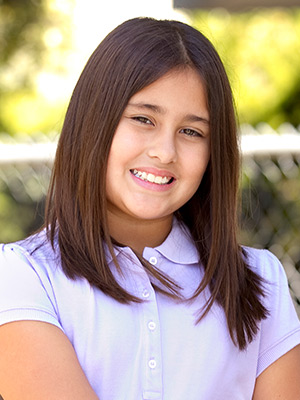Is Sedation Dentistry Right for You?
At All Smiles Pediatric Dentistry, we offer two types of in-office sedation. Nitrous oxide (or laughing gas) for simple or short procedures and IV sedation/general anesthesia for longer and more extensive procedures.
Dr. Allen Job has offered IV sedation dentistry at All Smiles Pediatric Dentistry in San Diego, CA for more than ten years. Dr. Job has completed and continues to complete extensive pediatric dentistry and sedation training. He has taught the pediatric dental sedation course for pediatric residents at Loma Linda University since 2005. Being both an educator and clinical dentist keeps him current and ahead of most colleagues in the field. You can rest assured knowing that such an experienced professional will be handling your child’s sedation dentistry.
Sedation dentistry is used to complete dental treatment comfortably and also that a child isn’t fearful of returning for regular dental visits. It preserves the child’s psyche allowing them to have positive dental experiences for future visits. It also decreases the number of appointments to complete treatment. Most visits using laughing gas are less than one hour, while most anesthesia cases take less than two hours.
Sedation dentistry uses medications to help patients relax so that they can have their dental procedures completed comfortably. Sedation dentistry is recommended for children who are very young and cannot sit still for their dental treatment. It is also recommended for children who have extensive dental needs. In addition, sedation dentistry is recommended for patients who are fearful of dental treatment and also for certain individuals with special needs.
Sedation Dentistry Consultations
Sedation dentistry isn’t for everyone. Each person’s needs are unique. Therefore, each patient is screened to determine if they are a good candidate for sedation. Some of the factors that are considered include past dental experiences, child’s temperament and cooperation level, dental trauma, and medical history to name a few.
We offer consultations for sedation dentistry. During the consultation we discuss the dental needs and treatment recommendations. We review the patient’s health history to find out if there are any medical conditions or medications that will require a physician consultation. Next, we discuss how the procedure will be performed from start to finish. Parents are encouraged to ask questions. Finally, we discuss financial arrangements and insurance benefits.
Reimbursement varies by insurance carriers and the individual insurance plan. We will be happy to discuss your insurance coverage during your sedation consultation.
What procedures can be done under IV sedation?
- Diagnostic services – X-rays, intraoral imaging, and comprehensive examinations
- Preventive services – Cleanings, fluoride treatments, and sealants
- Restorative treatment – Fillings, crowns (caps), root canal treatments
- Oral surgery – Extractions
- Minor orthodontic treatment – Space maintainers, orthodontic appliances
- Laser gum surgery - Frenectomies, tongue-tie release, and gingivectomies
The Day of Your Child’s Sedation Dentistry Appointment
For patients who require sedation, we work exclusively with a pediatric dental anesthesiologist, who is trained in treating patients on an outpatient setting.
The process is simple. All paperwork is completed ahead of the scheduled appointment day. The anesthesiologist will review the health history and go over any questions prior to the appointment day. On the appointment day the anesthesiologist will meet with the parent and patient, check the patient to ensure the patient is healthy, and then induce anesthesia. In our treatment room, the anesthesiologist then will place monitors and start an IV line. Diagnostic images, such as X-rays and intraoral images, will be taken. All treatment is then completed. The treatment time is dependent on the extent of dental treatment required to be completed.
We work exclusively with a pediatric dental anesthesiologist who is trained in treating patients in an outpatient setting. This means the patient should be able to leave the office awake within 30 minutes of the conclusion of their procedure. However, this depends on the individual and they may require a longer recovery before they can leave the office.
Diet: The rule for sedation is that the patient can have food up to six hours before the appointment time and clear liquids up to two hours before the appointment.
Clothing: Loose comfortable clothing is recommended; for example, wearing a t-shirt and sweatpants.
Activity: No school or physical activity for the day of treatment. An excused absence form will be provided.



